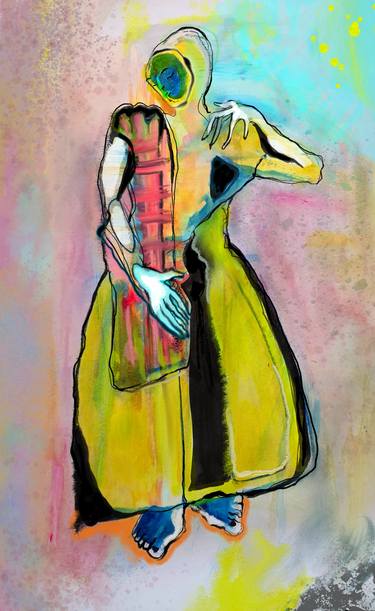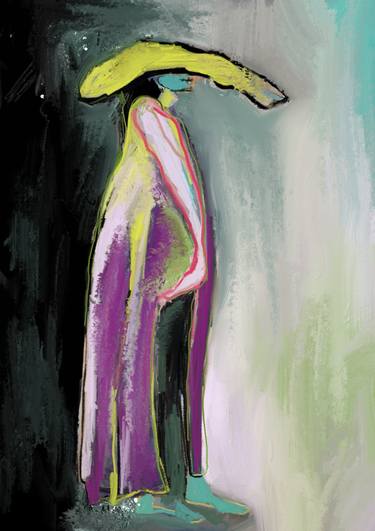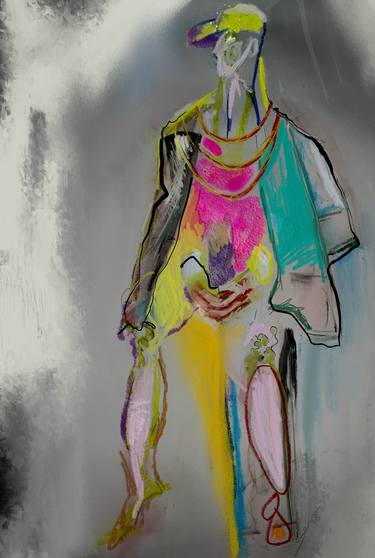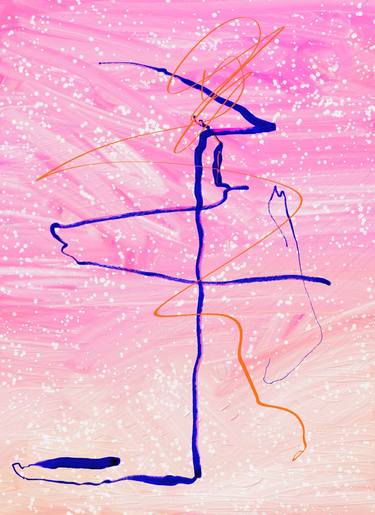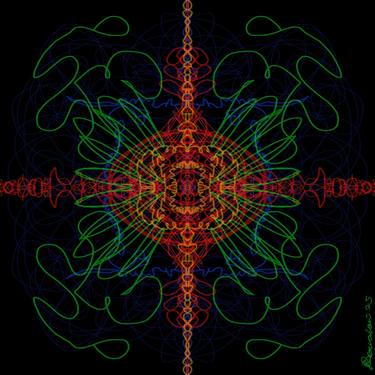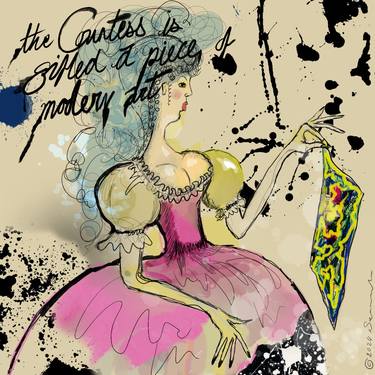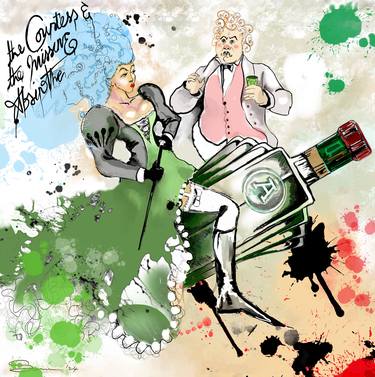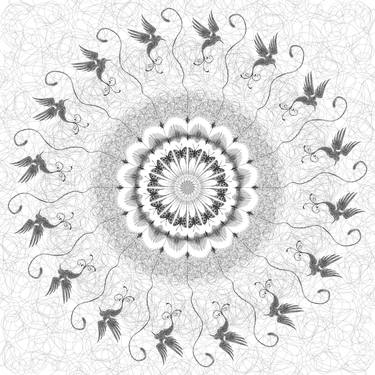Fashion! Art! Music! The home of Blink Friction a UK-based creative collective that merges sustainable fashion, collectible art, and rare books into a unique cultural experience. Founded by artist and musician Sarnia de la Maré FRSA, the brand champions eco-conscious design, artistic storytelling, and community engagement.
Mar 27, 2025
BASS BASICS: Double Bass Technique for Beginners
The Three Main Methods for Double Bass
Comparing Rabbath, Simandl, and Suzuki Methods for Double Bass
When learning the double bass, choosing the right method can shape a musician’s technique, interpretation, and overall approach to the instrument. Three of the most influential double bass pedagogical methods—François Rabbath, Franz Simandl, and Shinichi Suzuki—offer distinct philosophies, each with its strengths and limitations.
Simandl Method: The Traditional Foundation
Franz Simandl’s New Method for the Double Bass (published in 1874) remains a cornerstone of classical double bass pedagogy. Rooted in the Viennese school of playing, it emphasizes strict positional playing, a systematic approach to shifting, and progressive technical development.
Strengths:
Structured Learning: Simandl’s method divides the fingerboard into positions, with most of the left-hand technique built around half position and first position, progressively expanding.
Orchestral Application: It prepares bassists well for classical and orchestral playing, focusing on intonation and bow control.
Comprehensive Exercises: Etudes and exercises provide a solid technical foundation for developing consistent tone and precision.
Limitations:
Shifting Complexity: The heavy reliance on shifting (as opposed to pivoting or extended techniques) can make rapid passages feel cumbersome.
Rigid Approach: Some bassists find Simandl’s method too mechanical, limiting expression and modern techniques.
The Simandl method is ideal for students who want a solid classical foundation, particularly those aiming for orchestral careers.
Rabbath Method: A Revolutionary Approach
François Rabbath, a Syrian-born French bassist, developed a modern approach to double bass playing, challenging many traditional techniques. His method, documented in Nouvelle Technique de la Contrebasse, promotes fluidity, efficiency, and musicality.
Strengths:
Fewer Positions, More Freedom: Instead of the rigid positional system of Simandl, Rabbath divides the fingerboard into six broad positions, relying on pivoting and natural hand shapes for smoother transitions.
Expressive Playing: Encourages musical phrasing and a natural approach to technique, making it highly suitable for soloists and contemporary bassists.
Ergonomic Efficiency: Advocates for economy of motion, reducing unnecessary tension and allowing faster, more agile playing.
Thumb Position Mastery: Introduces thumb position early, which helps players navigate the upper register with ease.
Limitations:
Difficult to Adapt for Traditionalists: Bassists trained in Simandl may find Rabbath’s method disorienting at first.
Soloist-Oriented: While beneficial for expressive playing, some orchestral musicians feel it lacks the same rigor in foundational orchestral technique as Simandl.
Rabbath’s method is ideal for bassists seeking a freer, more modern approach, especially those interested in solo repertoire, jazz, and contemporary music.
Suzuki Method: An Aural Approach for Early Learners
Shinichi Suzuki’s method, originally developed for violinists, has been adapted for double bass and emphasizes learning by ear, early musicality, and group learning. The Suzuki method introduces bassists to music through listening, imitation, and repetition, fostering strong fundamental technique from a young age.
Strengths:
Early Start: Suitable for very young learners, using simplified repertoire to build intonation, rhythm, and bowing technique.
Emphasis on Ear Training: Develops intonation and phrasing naturally through listening and repetition.
Group Learning: Encourages ensemble playing, making it highly engaging for young musicians.
Limitations:
Limited Repertoire for Advanced Players: While great for beginners, Suzuki’s method lacks the depth of Simandl or Rabbath for professional-level development.
Less Emphasis on Reading Music Initially: Since it focuses on aural learning, students might develop reading skills later compared to traditional methods.
Suzuki is an excellent method for young beginners, offering a nurturing and ear-focused introduction to the double bass.
Which Method is Best?
The “best” method depends on the player’s goals:
For Orchestral Players: Simandl provides the most structured foundation.
For Soloists and Contemporary Bassists: Rabbath offers fluidity and expressiveness.
For Young Beginners: Suzuki nurtures musicality and ear training in an engaging way.
Many modern bassists incorporate elements from all three—using Simandl for traditional technique, Rabbath for agility and expression, and Suzuki’s principles for early training and musical development.
No matter which method you choose, the key to mastering the double bass lies in dedicated practice, strong fundamentals, and musical expression.
Other Podcasts
Comparing Rabbath, Simandl, and Suzuki Methods for Double Bass with Sarnia de la Maré FRSA
27 MAR 2025 · Comparing Rabbath, Simandl, and Suzuki Methods for Double Bass When learning the double bass, choosing the right method can shape a musician’s technique, interpretation, and overall approach to the instrument. Three of the most influential double bass pedagogical methods—François Rabbath, Franz Simandl, and Shinichi Suzuki—offer distinct philosophies, each with its strengths and limitations.Simandl Method: The Traditional FoundationFranz Simandl’s New Method for the Double Bass (published in 1874) remains a cornerstone of classical double bass pedagogy. Rooted in the Viennese school of playing, it emphasizes strict positional playing, a systematic approach to shifting, and progressive technical development.Strengths: - Structured Learning: Simandl’s method divides the fingerboard into positions, with most of the left-hand technique built around half position and first position, progressively expanding. - Orchestral Application: It prepares bassists well for classical and orchestral playing, focusing on intonation and bow control. - Comprehensive Exercises: Etudes and exercises provide a solid technical foundation for developing consistent tone and precision. Limitations: - Shifting Complexity: The heavy reliance on shifting (as opposed to pivoting or extended techniques) can make rapid passages feel cumbersome. - Rigid Approach: Some bassists find Simandl’s method too mechanical, limiting expression and modern techniques. The Simandl method is ideal for students who want a solid classical foundation, particularly those aiming for orchestral careers.Rabbath Method: A Revolutionary ApproachFrançois Rabbath, a Syrian-born French bassist, developed a modern approach to double bass playing, challenging many traditional techniques. His method, documented in Nouvelle Technique de la Contrebasse, promotes fluidity, efficiency, and musicality.Strengths: - Fewer Positions, More Freedom: Instead of the rigid positional system of Simandl, Rabbath divides the fingerboard into six broad positions, relying on pivoting and natural hand shapes for smoother transitions. - Expressive Playing: Encourages musical phrasing and a natural approach to technique, making it highly suitable for soloists and contemporary bassists. - Ergonomic Efficiency: Advocates for economy of motion, reducing unnecessary tension and allowing faster, more agile playing. - Thumb Position Mastery: Introduces thumb position early, which helps players navigate the upper register with ease. Limitations: - Difficult to Adapt for Traditionalists: Bassists trained in Simandl may find Rabbath’s method disorienting at first. - Soloist-Oriented: While beneficial for expressive playing, some orchestral musicians feel it lacks the same rigor in foundational orchestral technique as Simandl. Rabbath’s method is ideal for bassists seeking a freer, more modern approach, especially those interested in solo repertoire, jazz, and contemporary music.Suzuki Method: An Aural Approach for Early LearnersShinichi Suzuki’s method, originally developed for violinists, has been adapted for double bass and emphasizes learning by ear, early musicality, and group learning. The Suzuki method introduces bassists to music through listening, imitation, and repetition, fostering strong fundamental technique from a young age.Strengths: - Early Start: Suitable for very young learners, using simplified repertoire to build intonation, rhythm, and bowing technique. - Emphasis on Ear Training: Develops intonation and phrasing naturally through listening and repetition. - Group Learning: Encourages ensemble playing, making it highly engaging for young musicians. Limitations: - Limited Repertoire for Advanced Players: While great for beginners, Suzuki’s method lacks the depth of Simandl or Rabbath for professional-level development. - Less Emphasis on Reading Music Initially: Since it focuses on aural learning, students might develop reading skills later compared to traditional methods. Suzuki is an excellent method for young beginners, offering a nurturing and ear-focused introduction to the double bass.Which Method is Best?The “best” method depends on the player’s goals: - For Orchestral Players: Simandl provides the most structured foundation. - For Soloists and Contemporary Bassists: Rabbath offers fluidity and expressiveness. - For Young Beginners: Suzuki nurtures musicality and ear training in an engaging way. Many modern bassists incorporate elements from all three—using Simandl for traditional technique, Rabbath for agility and expression, and Suzuki’s principles for early training and musical development.No matter which method you choose, the key to mastering the double bass lies in dedicated practice, strong fundamentals, and musical expression.
Play
5m 5s
Add to queue
Down by Sarnia de la Maré funny poems live reading at the Tale Teller Club
Talk like no-one is listening and don't compete with machines. They are new life mottos for #sarniadelamare
I Remember by Sarnia de la Maré modern poetry live reading at the Tale Teller Club
Sarnia de la Mare live reading of The Songs of the Free Bird at the Tale Teller Club
Trump and Putin will giving me PTSD. How not to get overwhelmed in a world that doesn't care
Old Lady Ramblings on the Fight Against the Machine with iServalan from Tale Teller Club
Tim Pope at Frensham Heights Inspiring Storytelling at My Old School Made a Fab Event
Beachcomber Blast, what a great day spent outdoors on a hunt for art materials in the Solent sunken forest
The Power of Muscle Memory Formula and the Ear combined make you a great musician at the iServalan Contemporary Music School
Immersion Volume 1, New Interactive Book Version Release Coming Soon!
Immersion is a musical. When I wrote it I heard the songs in my head as well as the incidental music. Because it was written as a series I was able to to create chapters individually along with my musical compositions that accompanied them.
But what I really wanted to create was a fully interactive online experience (remember this was all conceptualised at the start of COVID 19). I have spent a good few years working and experimenting with different media and a cost-appropriate means of designing the book. I remained committed, despite the end of lockdowns, to the idea of an inspiring interactive book which worked with the storylines and allowed the viewer to totally immerse themselves in the experience of the story and its storytelling techniques.
I have finally satisfied all my prerequisites and am ready to release a series of books this year. I launch in April with the Book of Immersion Volume 1.
Watch this space please!


















































